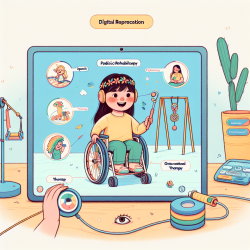Introduction
Personalized medicine (PM) is transforming healthcare by tailoring medical treatment to individual characteristics. Despite its potential, PM adoption in Southeast Asia (SEA) is still in its infancy. The research article "Current landscape of personalized medicine adoption and implementation in Southeast Asia" provides a comprehensive analysis of the current state of PM in SEA, highlighting both challenges and opportunities for practitioners in the region.
Key Findings from the Research
The study identifies significant progress in PM adoption in countries like Singapore and Thailand, while others like Malaysia and Indonesia remain in early stages. A regional pharmacogenomics research network, SEAPharm, has been established, indicating a collaborative effort to advance PM in the region. However, the research also points out several barriers:
- Funding Limitations: Most PM programs are champion-driven with limited funding, potentially widening health disparities.
- Lack of Awareness: There is low awareness of PM among the public and policymakers, which hampers its adoption.
- Governance and Policy: The absence of comprehensive PM policies and political support with financial investment remains a fundamental barrier.
Strategies for Practitioners
To improve PM adoption, practitioners can consider the following strategies:
- Enhance Awareness: Engage in community outreach and education programs to raise awareness about the benefits of PM among patients and healthcare providers.
- Advocate for Policy Support: Work with policymakers to develop comprehensive PM policies and secure funding for PM initiatives.
- Collaborate Regionally: Leverage regional networks like SEAPharm to share resources and expertise, facilitating the development of PM programs.
- Focus on Training: Invest in training programs for healthcare providers to build capacity in PM, ensuring they are equipped to deliver personalized care.
Encouraging Further Research
The study emphasizes the need for ongoing research to address the challenges of PM adoption. Practitioners are encouraged to engage in research activities that explore innovative solutions to overcome the identified barriers. Collaborative research efforts can lead to the development of new PM strategies that are both effective and equitable.
Conclusion
While the adoption of personalized medicine in Southeast Asia faces several challenges, the potential benefits for patient care are significant. By implementing the strategies outlined above and engaging in further research, practitioners can play a crucial role in advancing PM in the region. This collaborative effort will ensure that PM becomes an integral part of healthcare systems in SEA, ultimately improving health outcomes for diverse populations.
To read the original research paper, please follow this link: Current landscape of personalized medicine adoption and implementation in Southeast Asia.










